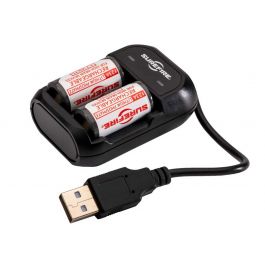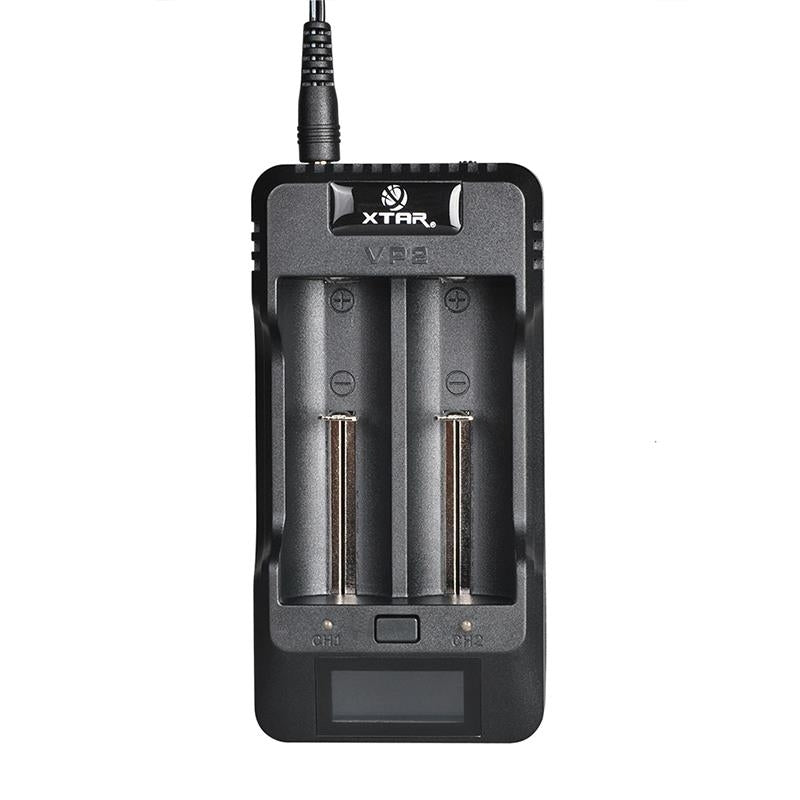Thanks. My Fenix HL121 would go from full brightness to dead without warning. Fortunately, I could change the AA cell with one hand in the dark.
On the search you linked, it says their charger with two cells is $20, but when I click it, it changes to $35. Whatever brand I buy, I'll see if it has a low-voltage cutoff. Thanks.
Roger that, samoset - I understand the confusion issue now, because it happened to me too!
I originally found the cells I linked to above w/ G-search, which took me directly to the BIF product page, which reflects the cell price @~$8 unit price, and also lists the quantity breaks below. That is, as I said, a good and fair unit price for the cells.
BIF does however, on the higher-level pages such as their web site search results, list the lowest price possible at the highest quantity break, which is where you saw / noted the lower 'volume' price for the cells. Now I understand where you saw that first, since you had landed on one of the higher-level pages (probably from a search on their site).
I was misled myself when I then did the search on the BIF site for the charger pricing (which I also linked to previously), which also shows the minimum price for higher quantities; and yes, when you click an entry there to go to a product page, that page clearly shows the unit price largest prominently and first, and lists the quantity breaks below. I get it now. Looks like the charger unit price is indeed $20 (not 10), and price for their charger w/2 cells is $35. Those all seem to be fair prices, albeit higher than the quantity pricing we were both noting.
BatteriesInAFlash offers thousands of batteries and chargers for cars, power tools, door locks and much more. We have a battery for your everyday needs.

www.batteriesinaflash.com
BatteriesInAFlash offers thousands of batteries and chargers for cars, power tools, door locks and much more. We have a battery for your everyday needs.

www.batteriesinaflash.com
My recommendation of the K2 cells stands, as I believe they're the best performers, and $8/cell is a fair price. Note that the LFP cells SF sells are rated @450 mAh, whereas the K2 cells are rated @600mAH. The K2s also have full 'professional' documentation available for them (datasheet in my earlier post), which I doubt is available for the SF cells, and those 2 factors + my experience leads me to recommend them over the SF cells. It appears the SF cells are priced $1 cheaper, but I don't think that's a good tradeoff w/ the above factors;
https://batteryjunction.com/batteries/shop-by-size/16340-rcr123a/surefire-sf2r-cb
SF also sells a pair of their LFP cells bundled with a charger for $29, so slightly less than the $35 bundle from K2:
<h2>SureFire SFLFP123 Charger Kit</h2> <p>The <em>SureFire SFLFP123 Charger Kit</em> is specially designed to recharge <a href="surefire-sflfp123-rcr123a-16340-450mah-3-2v-protected-lithium-iron-phosphate-lifepo4-button-to

batteryjunction.com
The SF charger, like the K2 charger, is dedicated for use with LFP123s. If your sole interest in getting LFPs and charging those specifically, either of those chargers would suffice. Now I'll tell you what I use, and would personally recommend for the charging requirement. For over 5 years, I've been using this charger for my LFP cells (XTAR VP2). It is a very good charger which I also use for all my Li-ion cells (16340, 14500, 18650), as it does all chemistries @ 3 different voltages, with selectable charging current (including 250 mA, appropriate for these smaller cells), and also a display to indicate cell voltage and state of charge. I have 3 of them, and they work very well. It's not a 'current' XTAR model, but is still available, and here's where I bought my 3rd one recently:
The XTAR VP2 is a top-quality Li-ion and LifePo4 battery charger. With multiple charging rates and voltage options, it ensures efficient and safe charging for various battery types. Order now!

www.18650batterystore.com
FWIW, the honorable HKJ at lygte also tested this charger and called it a
"very good" charger, which is
very high praise indeed coming from him!
If you don't already have a charger that can do LFP cells, I would recommend going with this XTAR over either of the other 2 chargers mentioned above. It can charge most every Li-ion you need to charge up to 18650, and offers advantages the other little dedicated LFP chargers don't. Again, if the LPFs are all you're concerned with charging, then the dedicated (more limited) chargers would do that for you, and you could buy them from one source. Either way, your own choice to fit your own needs, as always.
Regarding your "low voltage cutoff" mention, as you can see from the discharge curves I posted, there is no hard low voltage cutoff with the K2 cells; at least not down to the 2.0V discharge shown on the graph, which is well past where one will be seeing significant dimming in most flashlights, so you need not be concerned about being left in the dark by a cell protection circuit, nor are you likely to 'over-discharge' them. The reason for this lack of cutoff is that, unlike most other Li-ion chemistries, LFP is routinely discharged to 2.5V, with 2.0V listed as the minimum in the specs; much lower than other chemistries AFAIK. I understand that 'over-discharge' is not the issue that it is for other chemistries, and that they do not become so 'dangerous' as the other types do when over-discharged; although discharging them below 2.0V may compromise their performance. Again, full datasheet in my earlier posts which details those specs.
Hope that helps clarify the matter, and eliminates the pricing confusion (some of thich I unfortunately contributed to [sorry 'bout that] ).
EDIT: You may also run across some LFP123 cells made by Tenergy, but I don't recommend them because I found them to be inferior to the K2s in my testing.
 Help Support Candle Power Flashlight Forum
Help Support Candle Power Flashlight Forum
www.batteriesinaflash.com

